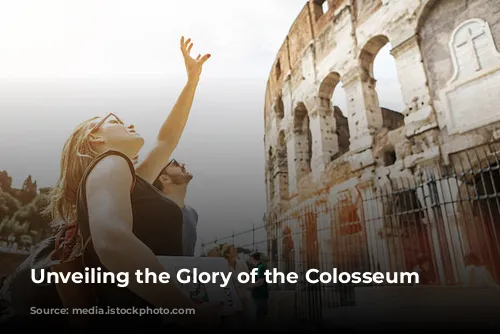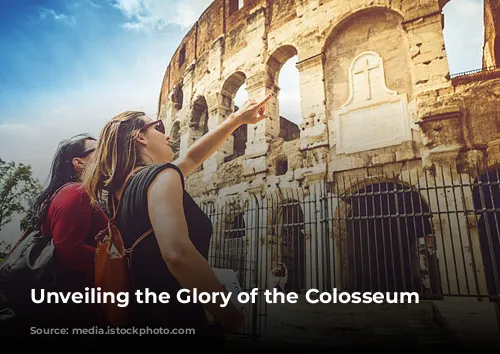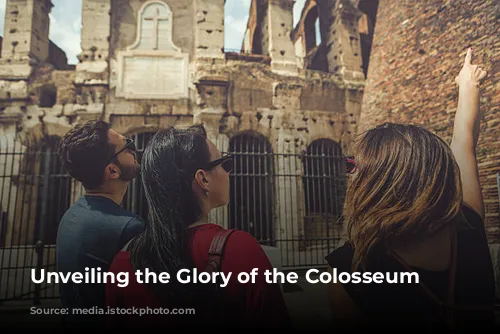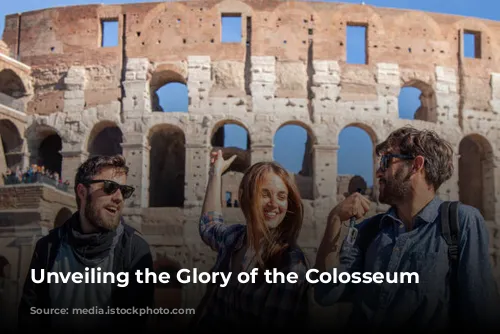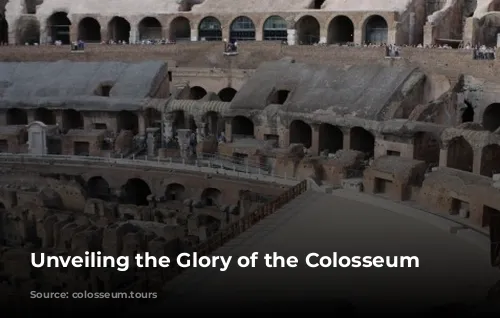Step back in time and witness the grandeur of the Colosseum, a symbol of Rome’s ancient might! This iconic monument, a testament to the ingenuity of Roman engineers, is a must-see for any visitor to the Eternal City. Explore its rich history, marvel at its architectural brilliance, and immerse yourself in the captivating stories of gladiatorial combat and grand spectacles.
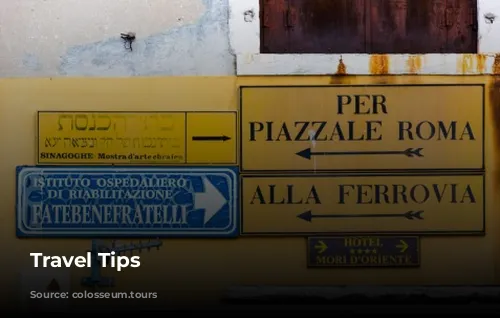
A Guide to Visiting the Colosseum
Before embarking on your journey to the Colosseum, familiarize yourself with its opening hours. The Colosseum’s schedule varies depending on the time of year.
- January 2 to February 15: 8:30 AM – 3:30 PM
- February 16 to March 15: 8:30 AM – 4:00 PM
- March 16 to last Saturday of March: 8:30 AM – 4:30 PM
- Last Sunday of March to August 31: 8:30 AM – 6:15 PM
- September 1 to September 30: 8:30 AM – 6:00 PM
- October 1 to last Saturday of October: 8:30 AM – 5:30 PM
- Last Sunday of October to December 31: 8:30 AM – 3:30 PM
To avoid lengthy queues and guarantee your entry, booking tickets in advance is highly recommended. This allows you to select your preferred date and time slot, making your visit smoother and more enjoyable. Pre-booking tickets often grants you skip-the-line access, allowing you to maximize your time exploring this magnificent landmark.
To ensure a comfortable and hassle-free visit, consider these essential tips:
- Leave bulky items at home: Large bags, backpacks, wheeled bags, glass containers, weapons (including pocket knives) and aerosol sprays are prohibited inside the Colosseum.
- Wear comfortable footwear: Rome’s charming streets and historical sites beckon you to explore on foot. Comfortable shoes will ensure you can fully enjoy your journey without discomfort.
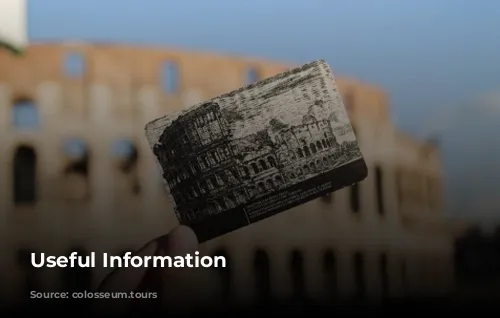
The Colosseum: A Monument to Ancient Power
The Colosseum stands as a testament to the engineering prowess and architectural brilliance of the ancient Romans. This massive amphitheater, built around 70-80 AD by Emperor Vespasian, is a testament to the flamboyant grandeur of the Flavian Dynasty. With a capacity of up to 80,000 spectators, the Colosseum hosted a myriad of events, including gladiator fights, animal hunts, and even mock naval battles.
The Colosseum’s design is a marvel of engineering, showcasing the Romans’ ingenuity and practical skills. Its large oval shape, with four levels standing around 48 meters tall, was constructed using limestone, concrete, and bricks. The three tiers of arches are adorned with different types of columns, adding to its architectural splendor: Doric columns on the lower level, Ionic in the middle, and Corinthian on the top. The Colosseum’s ramps, stairs, and tunnels facilitated efficient movement of people and animals during events, showcasing the Romans’ skill in crowd management and logistical planning.
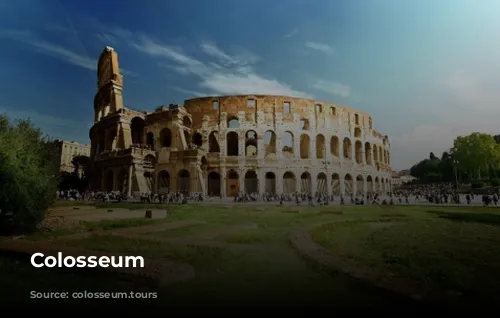
Experience the Colosseum at Night
The Colosseum, a sight to behold during the day, transforms into a majestic and enchanting spectacle at night. As the sun sets, the Colosseum’s silhouette against the dark sky is captivating, reminding us of its thrilling history and evoking a sense of wonder. The Colosseum at night offers a unique opportunity to experience its beauty and peaceful atmosphere, transporting you to another era.

Indulge in Roman Flavors
While Rome offers upscale dining options, nothing beats the authentic taste of Roman street food. Seek out spots frequented by locals, a sure sign of delicious and high-quality fare.
Tipping etiquette in Rome differs from many other countries. While most restaurants automatically include a service charge in your bill, a 10% tip is customary if you are particularly pleased with the service or if the bill doesn’t include a service charge.
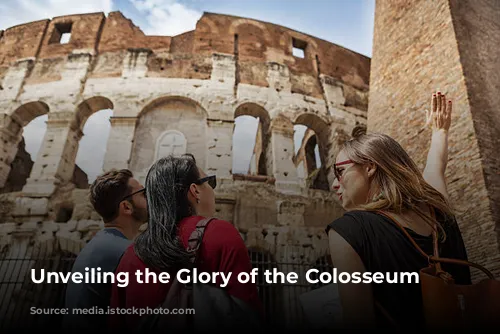
Unveiling the Ancient City: A Guided Tour
Journey through the annals of history with a knowledgeable guide. This immersive experience provides a deeper understanding of the Colosseum and the wonders of ancient Rome.
Highlights of the tour:
- The Colosseum: Dive deep into the history of this iconic structure, marveling at its impressive architecture and learning about its fascinating past, including the damage it sustained from earthquakes.
- Palatine Hill: Climb to the top of Palatine Hill, where Emperors once resided, and enjoy breathtaking panoramic views of the ancient city. Explore the ruins of the House of Augustus and other historical sites.
- Roman Forum: Wander through the Roman Forum, once a bustling center of political life. Explore ancient roads, temples, offices, and the Senate building. Marvel at architectural wonders like the Temple of Romulus.
The guide’s captivating stories and insights will bring the history of Rome to life, enriching your understanding of these remarkable landmarks.
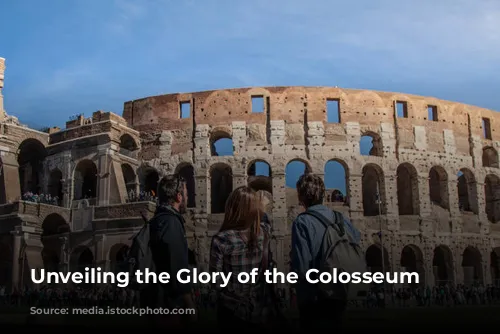
Explore Beyond the Colosseum
A private tour of the Colosseum and the Roman Forum offers a personalized and unforgettable experience. Your friendly and professional guide will cater to your interests and needs, ensuring a tailored tour. Enjoy priority access to the Colosseum and delve into the hidden gems of the ancient city.
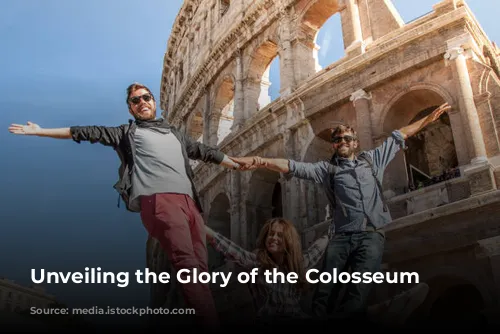
Immerse Yourself in the Vatican
No visit to Rome is complete without experiencing the Vatican City, a UNESCO World Heritage Site brimming with history and spirituality. Home to the Pope and the Roman Catholic Church, the Vatican is a global center of reverence.
Within its walls, you will find:
- The Vatican Museums: Discover a treasure trove of art and artifacts, including iconic works by Michelangelo and Raphael.
- The Sistine Chapel: Be mesmerized by Michelangelo’s masterpiece on the chapel’s ceiling, a breathtaking display of artistic genius.
- St. Peter’s Basilica: Experience architectural grandeur and religious significance in this awe-inspiring basilica.
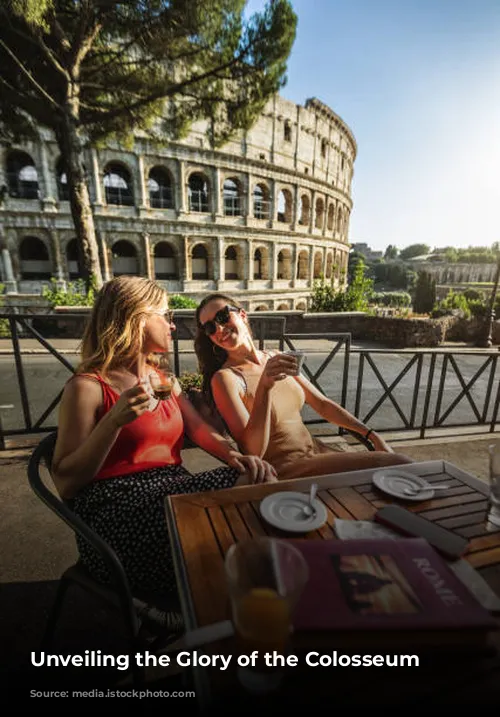
The Vibrant Heart of Rome
Venture beyond the historical landmarks and explore the authentic charm of Rome’s vibrant neighborhoods.
- Trastevere: Lose yourself in the bohemian atmosphere of Trastevere, with its narrow cobblestone streets, colorful buildings, bustling piazzas, lively trattorias, and vibrant nightlife.
- Monti: Discover the eclectic ambiance of Monti, a blend of ancient ruins, trendy boutiques, artisanal shops, quaint cafes, and artist workshops. Explore its labyrinthine alleys and uncover hidden gems.
Both neighborhoods offer picturesque squares where locals gather, creating a lively atmosphere perfect for leisurely strolls.
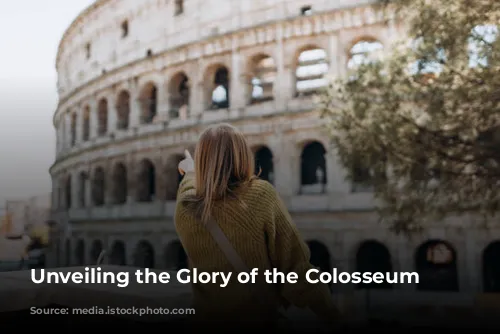
Free Admission to Roman Treasures
Every first Sunday of the month, Roman state-owned museums, galleries, parks, and some archaeological sites offer free admission. However, be prepared for larger crowds on this popular day and arrive early to make the most of this opportunity.
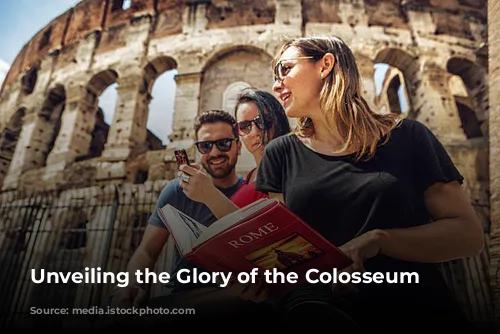
The Colosseum: An Enduring Symbol
The Colosseum stands as a testament to the enduring legacy of the Roman Empire. This iconic monument is not only a symbol of ancient Rome’s power and prestige but also a reminder of the city’s remarkable history and architectural brilliance. It is a must-see destination for anyone visiting Rome, offering a glimpse into a bygone era of grandeur and spectacle.
